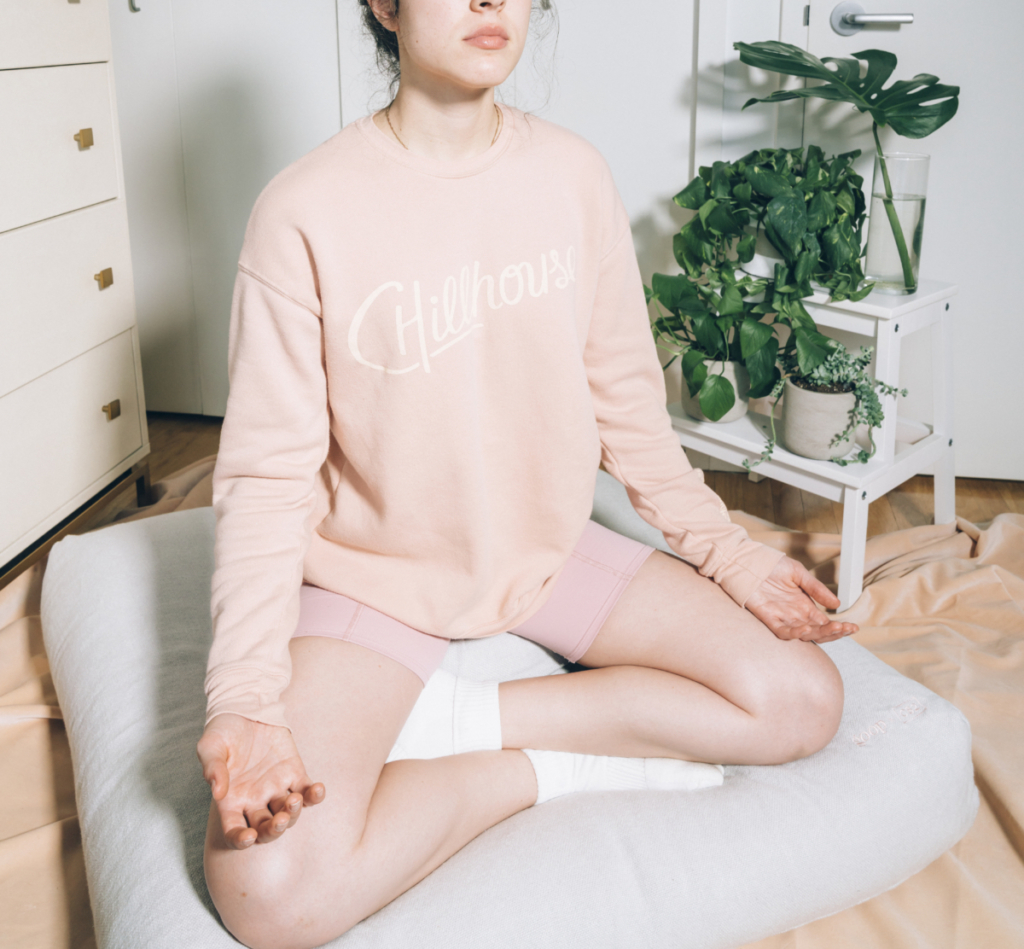
At 33 I find myself questioning everything in my life: Why did I choose to become a therapist and specialize in eating disorders? Where are all the nice, Jewish gentlemen in a city as large as New York? And when did I start settling, personally and professionally? Feeling unhappy overall, and at a turning point in my life, I begin to take a collective look at where I am and how I got here. Looking retrospectively, one common theme emerges: I am at this point in my life, largely, by ignoring my intuition. Often my “yeses” should have been “nos.” I listen to others more, instead of listening to myself. I am “silencing” my innate beliefs and primary truths. Maybe you can relate? But then I wonder: “What would life be like if I start following my intuitive ‘pings’?” In an effort to connect further with my intuition, I research Vipassana Meditation and find it could be especially good for people in transitions. I think, now is a great time to give this a try.
Vipassana
Vipassana meditation is no ordinary meditation practice. It is a ten-day silent meditation experience. For 10 days, there is no talking, no eye contact, no phones, no writing, and no reading, just to name a few of the rules. Through Vipassana, you learn a meditation technique that aspires to alleviate suffering and elevate the peace, love, and compassion you feel. Intrigued, I pack my suitcase in NYC and drive to the Vipassana center in Massachusetts.
The Silence is the Easiest Part
On the day of my arrival, I check in and then ’check’ my phone, journal, and pen. A light dinner is served. And since ‘noble silence’ has yet to begin, we are free to chat. There are about 120 of us, and I know no one. I sit down at a table with others telling their stories. One woman, Karina, from Ukraine, has taken this 10-day silent retreat before. When I ask for the intel about what to expect in these 10 days, she won’t tell me much, fearing that her first-hand knowledge will negatively impact my experience. With that said, she looks at me and says, “I will tell you, though, that the silence is the easiest part.”
Here Goes
4:00 am. The gong rings, signifying wake-up time at the Vipassana Meditation retreat. I roll over in my twin bed, pulling the covers that I brought from home over my face to rest a little longer. 4:15 am the gong rings again. This time it’s really wake-up time. I throw on sweatpants, brush my teeth, and head into the meditation hall for the first daily meditation from 4:30-6: 30 am. I get as comfortable as I can, sitting on my cushion that they provided, positioning pillows around me to make the next two hours of silent meditation as bearable as possible. I settle into the meditation technique we were taught last night: focusing on the sensation of respiration, noticing how my breathing feels, and when my mind wanders, bringing my attention back to the breathing technique. I last only seconds before my “monkey mind” kicks in, as they call it at Vipassana, distracting me from my meditation practice. “I’m so tired… I can’t wait for coffee… I hope they have oat milk… how do people sit here like this… I can’t get comfortable… ok, Kate, focus on the breathing… ugh, my nose is so stuffy, it’s so hard to breathe… I need to kick this cold… ohh, I’m doing it again, stop thinking, Kate, focus…” This is going to be a long two hours.
Meeting Goenka
The schedule at Vipassana is intense, meditating for about 10 hours daily, with breaks for meals and the like. The evenings become a favorite time of day for me, where we gather for a discourse, taught via video by a man known as S.N Goenka. Goenka is known for reviving the teachings of Vipassana worldwide, a meditation technique that has been around for 2,500 years. He looks like a kind, loving, Indian uncle, who loves to tell stories, and chant ancient prayers — a language so ancient that even participants who came from India who studied linguistics can’t understand him. Goenka shares that he came to find Vipassana in the 1950s, after working as a successful businessman with offices worldwide, and yet, he began suffering from overpowering migraines. He spent years meeting with the best doctors in the world, only to be told there was no cure or root cause for his headaches. And then he found Vipassana. Not only did his first 10-day silent meditation alleviate his headaches, but he also felt happier, more loving, and more peaceful. And so he began teaching Vipassana, sharing the meditation technique that changed his life.
“He says that while the pain in life is inevitable,
suffering is our choice.”
Our Cravings Are Our Misery
I want my life to change, too, I thought. I want a career I love, a man I love, and a new NYC apartment I love. Will Vipassana get me closer to all those things I’m wanting? Not necessarily, Goenka explains in one evening’s discourse. He says that while the pain in life is inevitable, suffering is our choice. We choose which thoughts we want to think about, and for how long we want to think about them. It’s okay to want things, or not want things, but to the extent that our ‘wants’ become cravings, and our ‘don’t wants’ become aversions, we can create our own misery. One way out of misery and into liberation is, he says, with the specific techniques of a Vipassana practice.
The Law of Nature: Impermanence
The Vipassana meditation technique is taught in consecutive steps; we learn a new technique each day, each lesson building on the last. By Day 6, I have had enough. I feel agitated, restless, and annoyed. I’m sick of meditating. I crave a good NYC latte. I dream of them. I need to check on the news and Instagram. In Goenka’s evening discourse tonight, we learn about The Law Of Nature. In essence, he says, all things in life are impermanent. When we resist change, we suffer. When we accept and embrace impermanence, we reduce our suffering. Much like the changing seasons, everything in our lives is constantly changing. The happy times fade, the painful times fade. Intellectually, I get it, the importance of living mindfully, of feeling grateful for being healthy, and for being alive, every day. Now how to embody this…
Day 11
I don’t think the magic of Vipassana really “clicked” for me until Day 11. On Day 10, “noble silence” ends, and we all chat. I exchange stories with fellow meditators, still not feeling an increased sense of happiness or compassion that Goenka says everyone feels by the end of this retreat. But then I chat with a man who tells me about this one time during breakfast — a piece of toast starts burning, and the toaster in their dining room catches on fire. Being unable to speak, or make eye contact, five men rush around this fire-filled toaster, trying to unplug it, pour water on it. And at that moment, I laugh so hard, harder than I have in so long. It hurts. As I catch my breath, I think to myself, maybe I just haven’t heard a joke in 10 days, or maybe I’m actually feeling happier.
Postscript
It’s been about four weeks since my return from the Vipassana meditation. In this time, I continue meditating daily. I notice an increase in my energy, and subsequently, a dramatic decrease in my daily coffee intake — down from two cups daily to one-half cup (though that first latte after Vipassana was especially delicious). More importantly, I feel increasingly confident in my decision to leave my full-time work. To say goodbye to the lovely man I was dating, since I know he is not my forever man. And to leave my awful apartment, finding instead a new place that’s more “me.” I suppose that’s my biggest Vipassana takeaway — connecting more deeply with my intuition, and developing the courage to trust it, despite it sometimes not making logical sense. After searching for this courage all my life, I’d say silently meditating for 10 days is a small price to pay for a lifelong reward.
In Essence
Upon my return to NYC after my 10-day silent meditation experience, friends and family asked about my top takeaways. So here they are, or as my friend and fellow Vipassana practitioner Jordana Jacobs, PhD, calls them: “Vipassana life hacks for the ultimate life hack.”
- Meditate: Daily meditation is shown to boost your mood, improve stress management, and increase your productivity, among many additional benefits. I now practice Vipassna meditation daily, and I feel better for it.
- Remember Daily Highlights: It was recommended to me that, during my Vipassana, I find some way to remember each day, otherwise, I might forget important moments and the whole 10 days would blur together. I made sure to do this during my Vipassana (i.e. day 2 — first winter snow), and have been documenting my daily thoughts via journaling ever since. Life can quickly pass us by, so finding a mindful practice that works for you (I like journaling and Tim Ferriss’ Jar of Awesome), can invite us to slow down, and savor life’s little moments.
- Self-care: Without my phone for 10 days, I found myself living more mindfully and peacefully. Like during lunch, sans Netflix, I felt much more present — connecting with the flavors, and feeling gratitude for my food. Now, part of my self-care routine includes changing my relationship with technology, like turning off all social media for Shabbat, and setting an alarm for designated times throughout my day to check Instagram and Facebook. In implementing these boundaries, I feel more creative, productive, and connected.
—–
Feature image via Victoria Morris

